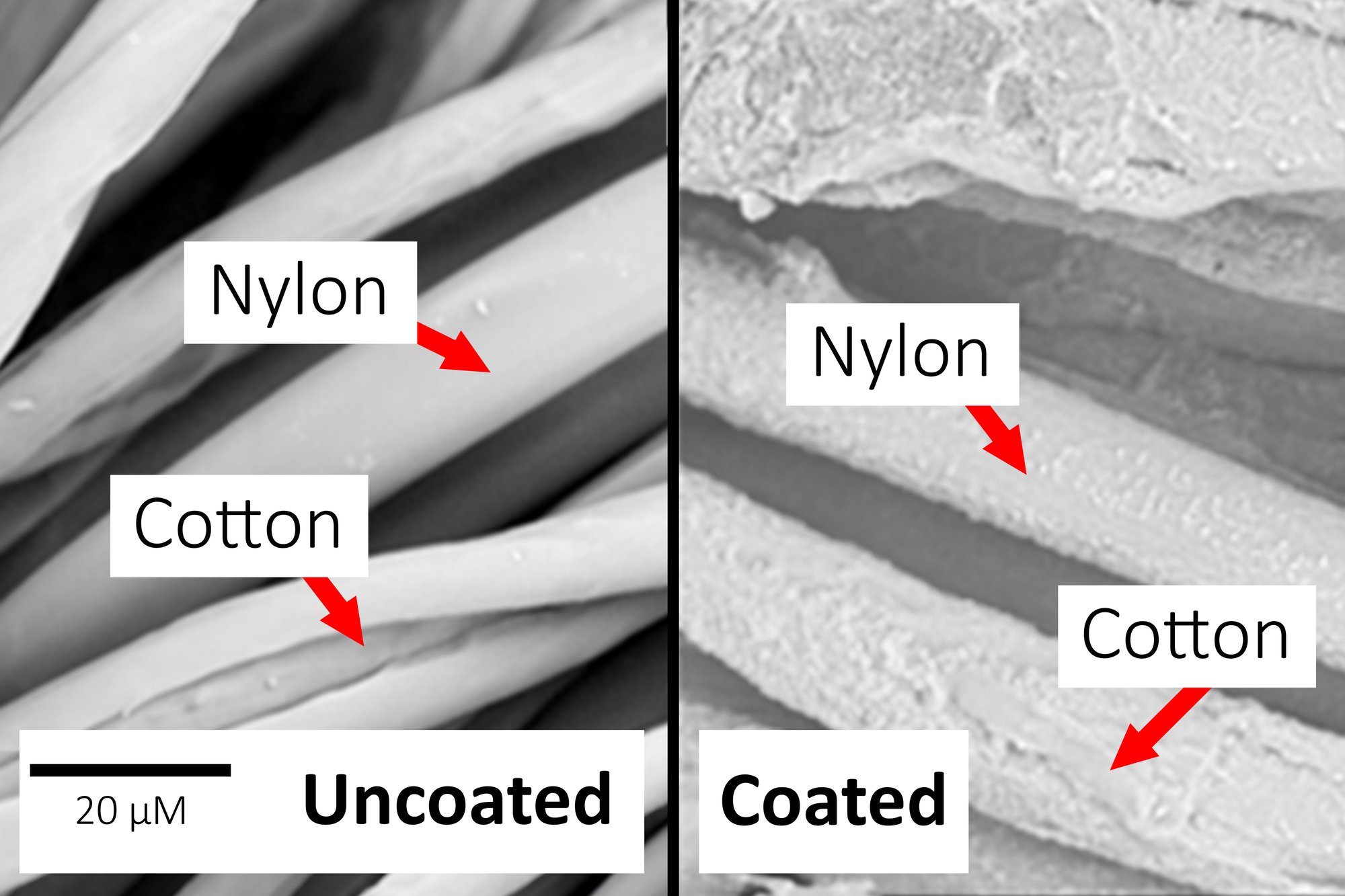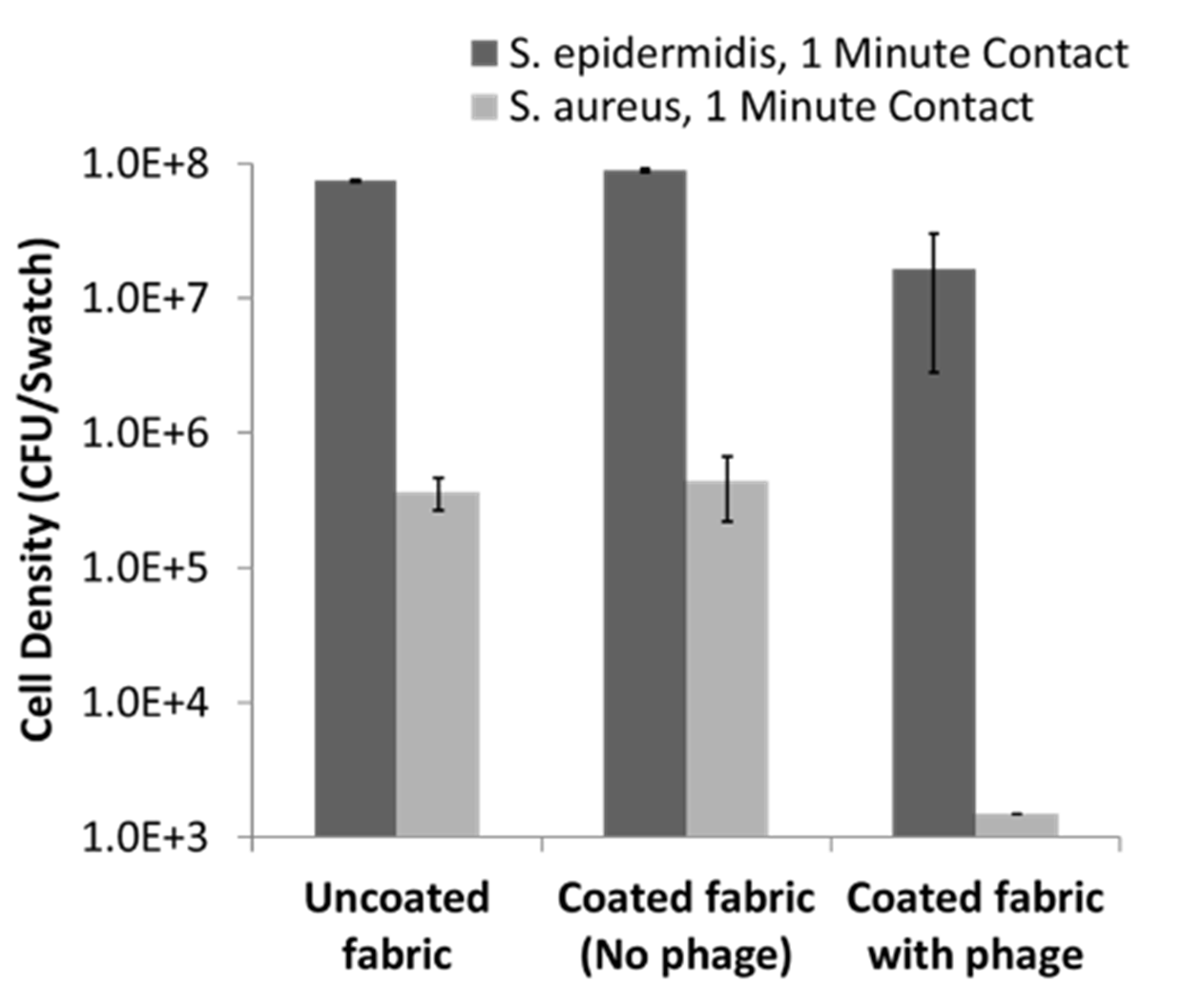Antimicrobial Textile Coatings
Warfighters suffer from the colonization of harmful skin bacteria associated with skin diseases (S. aureus). Textiles are an excellent breeding ground for opportunistic microorganisms to take hold due to body temperature, moisture and nutrients from the skin. Traditional antimicrobial agents possess broad-spectrum activity, destroying all skin bacteria (including health organisms) and disrupt the skin microbiome.


Through an Army funded program, Giner designed a bacteriophage-based textile coating that targets only the harmful skin bacteria. Phages are the natural predators of bacteria, and are very specific, leaving commensals unharmed. Giner embedded phages into a polymer matrix textile coating and demonstrated excellent killing of the target bacteria (S. aureus) with minimmal impact on the commensal strain (S. epidermidis). Results were later confirmed in an animal study, where rodents treated with Giner’s antimicrobial coatings showed significantly reduced microbial counts.
